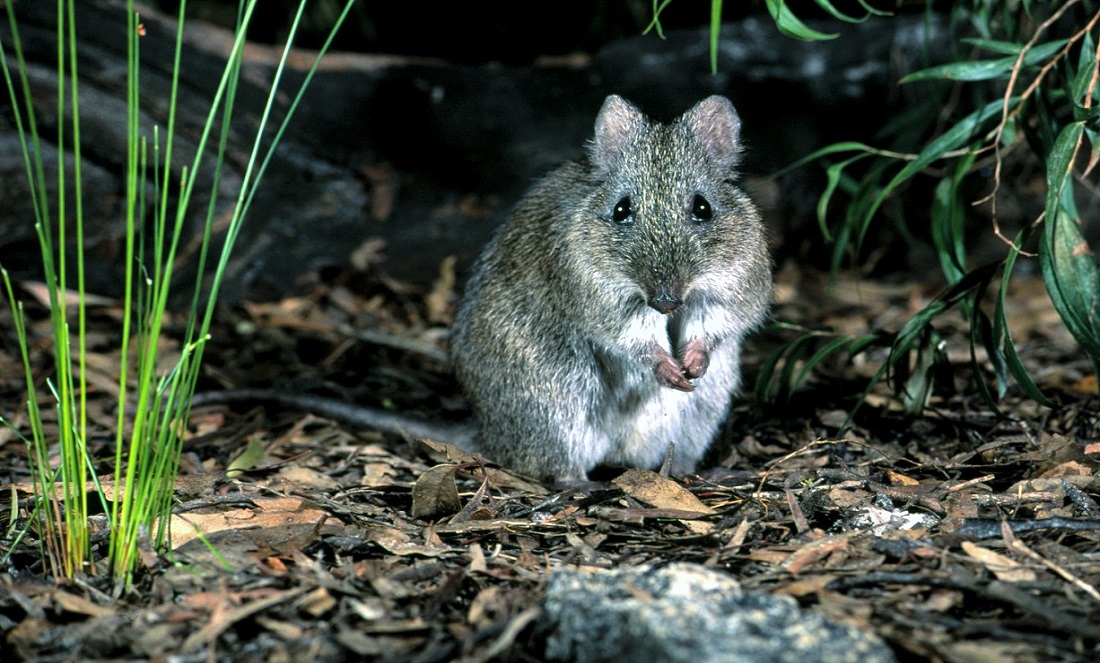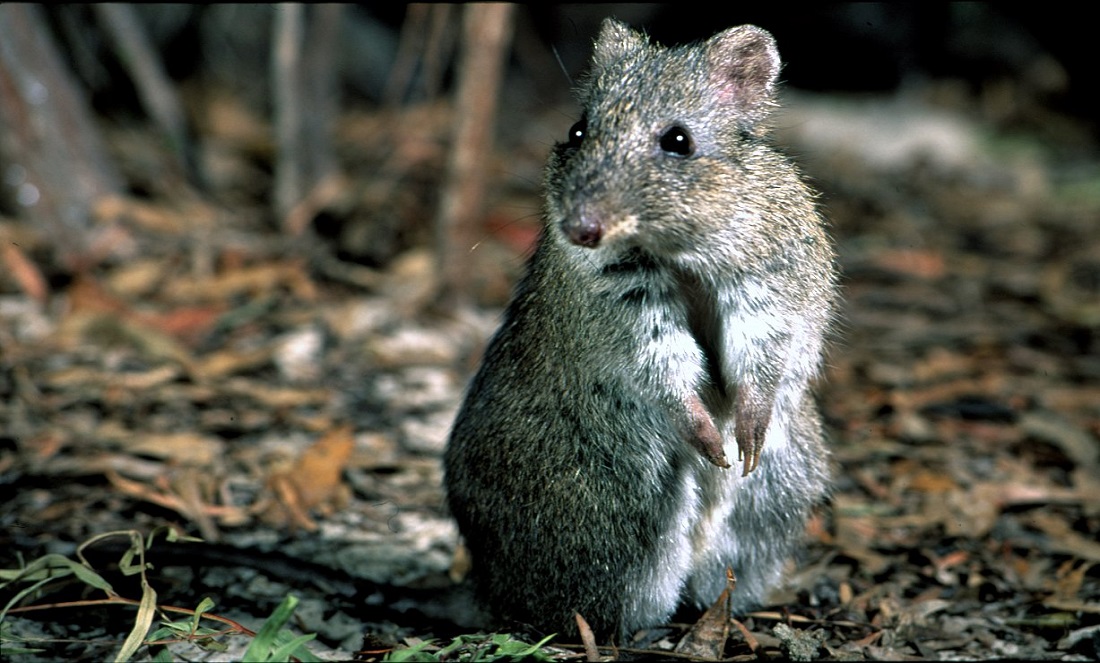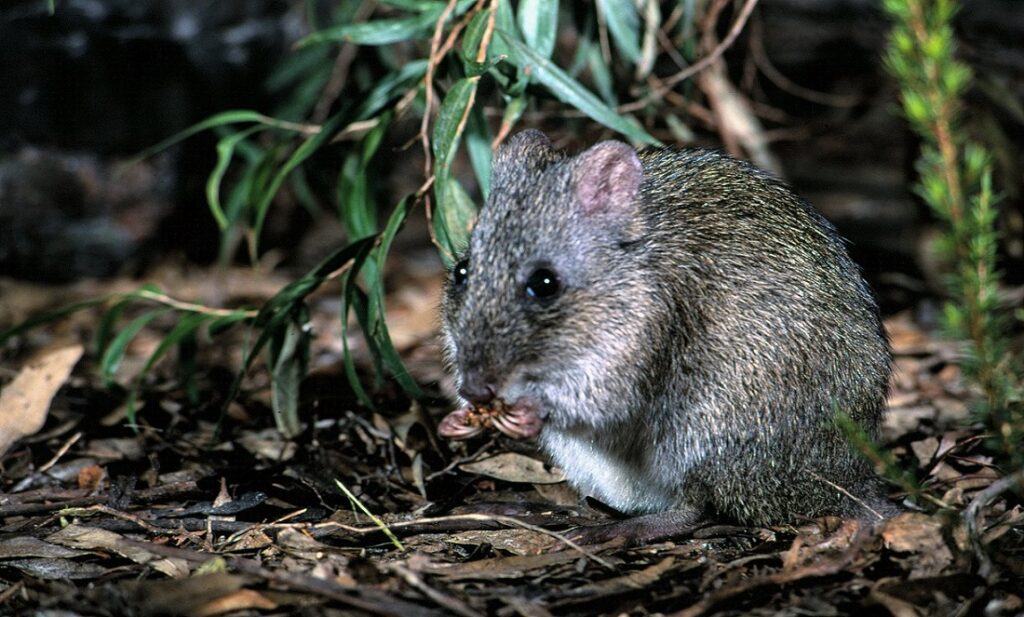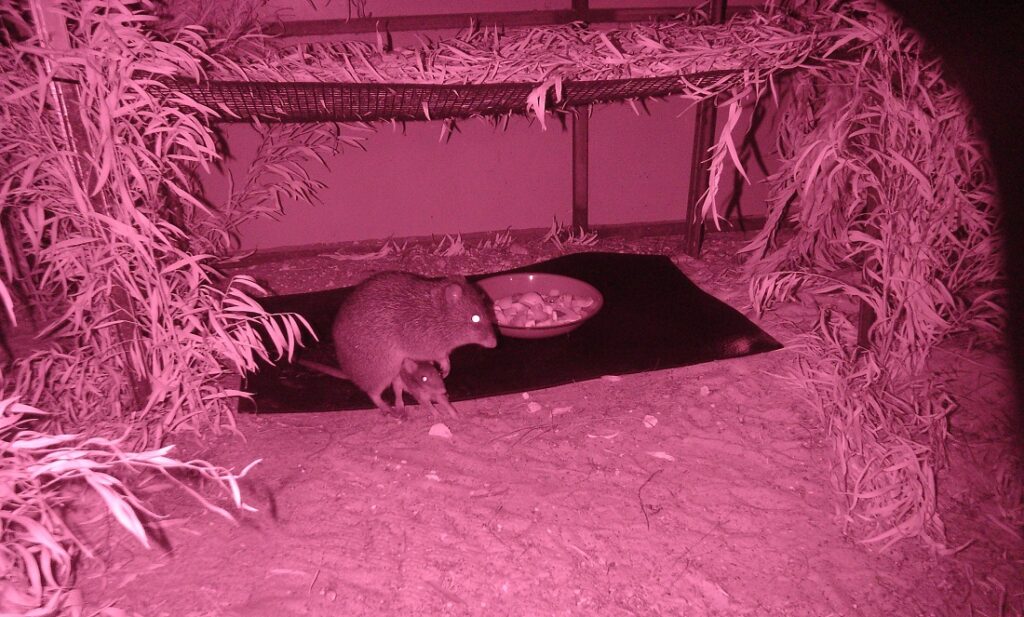Discovered by English naturalist John Gilbert near Albany in 1840, recordings of the ‘rat kangaroo’ were so rare it was presumed to be extinct by 1909.
Almost a century later in 1994, it was rediscovered at Two Peoples Bay Nature Reserve, 35km east of Albany.
The rare rabbit-sized marsupial is back from the dead but remains on the brink of extinction.
Listed as critically endangered, Gilbert’s potoroo is the world’s rarest marsupial and Australia’s rarest mammal.
LESS THAN 80 POTOROOS LEFT ON THE PLANET
Optimistic estimates are less than 80 marsupials exist in the world.
The last wild population of about 30 animals at Two Peoples Bay suffered a serious blow in November 2015.
Bushfire razed 1200ha of reserve, destroying 95% of the animal’s habitat.
Its numbers nosedived, with only seven marsupials surviving the blaze.
SAFEGUARDING A RARE SPECIES
Before the fire, two ‘ark’ populations were set up to minimise the risk of fire wiping out the species in a single blow.
Bald Island, 25km east of Two Peoples Bay, has been a successful safe haven since 2005 but reached its carrying capacity.
A cat and fox-proof enclosure at Waychinicup National Park, 65km east of Albany, has protected about 20 potoroos from feral predators since 2008 but they are falling prey to carpet pythons.
A third translocation trialled on Michaelmas Island, in King George Sound, in 2016 failed.
Gilbert’s potoroos are fussy eaters, with truffles making up 90% of their diet, and it’s thought there wasn’t enough fungi on the 90ha island.
ALBANY COMMUNITY TAKES ACTION
The Gilbert’s Potoroo Action Group (GPAG) formed in 2001.
The not-for-profit organisation’s 70 volunteers raise awareness of the potoroo’s plight and funds to support conservation action.
GPAG works with Department of Parks and Wildlife senior research scientist Dr Tony Friend to carry out the Gilbert’s Potoroo Recovery Plan.
GPAG chairman Ron Dorn is passionate about preventing the potoroo from going back on the extinct list permanently.

‘WE’RE NOT GIVING UP ON GILBERT’S POTOROO’
Ron says losing Gilbert’s potoroo would be a blow to the internationally recognised biodiversity of WA’s South West.
“Some have the view that a ‘triage policy’ should regard an animal as threatened as Gilbert’s potoroo as a “basket case” – not able to be saved,” he says.
“That’s not something I can accept.”
“I think every flora and fauna species needs to be saved if it can be.”
THE HUNT FOR A NEW ISLAND HOME
Gilbert’s potoroo was added to the Federal government’s Threatened Species Strategy Action Plan in 2016 to boost its chance of survival.
The trajectory list aims to protect the 20 most at-risk mammals in Australia.
In February 2017, GPAG received a $250,000 Threatened Species Recovery Fund grant to find a new island home for a fourth insurance population.
The Recherche Archipelago between Esperance and Israelite Bay is being assessed for a suitable island, Ron says.
The earliest transfer of potoroos to the chosen site would be mid-2018.











